McCartney sang it:
Now somewhere in the Black Mountain Hills of Dakota
There lived a young boy named Rocky Raccoon
Dances With Wolves was filmed here. Deadwood, also. These are areas where Custer made his final mess of things, where Native Americans were driven into Reservations, where Wild Bill was murdered and Calamity Jane made her name.
And without people as distractions, the land today makes it easy to imagine being here 150 years ago. whether in the Great Plains or the Black Hills.1
I’ll show you spaces that sparked my imagination last week.2 Spoiler alert, they are not streets of Deadwood today. Click on the images to get a closer look.
Three Regions
In the middle of it all, The Great Plains are aptly named.
Vastness. Big, wide lands and bigger skies.3 The Lakota people lived here for several centuries, moving about the region nomadically, using tipis for shelter and leaving no marks on the land (until being disastrously forced into reservations). European Americans settled here in the 1800’s, but never densely. The area is both somewhat settled and somewhat wild, with ranches and tiny towns dotting the landscape, interspersed with protected areas.4 There’s not a lot of concrete or asphalt out here. Miles of dirt roads, where there are any roads at all.
Living here more than a century ago was not easy, for anyone. There are small gravesites of European Americans scattered about, marking where some of the settlers completed their journeys here. Some sites contain only one family, others a few.
Structures may survive for some time after their inhabitants have gone, but they too are impermanent. Without others arriving to replace or rebuild them, they serve as temporary, stubborn reminders of the challenging environment until they collapse and disappear as well.
Then there are places where structures were never built, and never will be. The Mako Sika were so named by the Lakota people. Translated to the English language, the Mako Sika are “Bad Lands.”
These Badlands were not named for religious reasons. It’s just difficult to survive here, for most types of plants and animals. They are dramatic lands, however. And while geologists can describe how they’ve changed via erosion, in general they remain as they were before the first Lakota roamed the area.
The Great Plains here are flanked by Mako Sika on one side and by the Paha Sapa, or “Black Hills”, on the other. While rugged, these Paha Sapa boast rich forests and are sprinkled with streams and meadows, making them much more hospitable than the Badlands by comparison. Still extremely harsh during the long, frozen, wind-swept winters, but more hospitable.
The Paha Sapa are hospitable enough that there are wild horses here. Emblematic of the “wild west,” the Spanish first brought horses in the 16th century to what we now call Mexico and the Southwestern U.S. Many horses and burros escaped the Spaniards, and they thrived and spread out quickly. The Lakota people encountered horses around the year 1700, and domesticated some of them almost immediately. Amazingly, the Lakota were 1,400 miles or more from where the horses had been initially introduced.
The horses were settlers, too.
Many horses remain wild, and are scattered about the western half of the US., often in territories controlled by the Bureau of Land Management.
And hundreds of them are here in one particular region of the Paha Sapa. That’s a story of its own, and worth a look.5
So many stories here. Bringing me back in time, in my imagination.
Until next time,
Is there something here you like or dislike? Questions? Have anything else to say? Let us all know by clicking on the Comments button below, and express yourself. Don’t be shy, now.
If you like this post you’re bound to like the next one as well. I’m sending them weekly. Quit any time, or better yet, stay and read on!
Know anybody who should hear about all this? Be a friend and let them know!
Or, are you interested in seeing more work? My website welcomes you. We may even want to work together. I promise a joyous and productive experience if we do.
Visit: www.dobkinphoto.com
Visiting South Dakota came at the invitation of my friend Dave, and I owe him one. And April is a fantastic time to immerse in the region, as I alluded to last week. We used Rapid City as “base camp” because so many diverse areas are within an hour’s drive, including everything in this letter. Last week’s image, from Nebraska, was a bit further out, just under two hours away.
Next week I’ll show wildlife, another really nice attraction of the area.
With due respect to what is now Montana, the self-described Big Sky State. They are adjacent and separated by political drawings, nothing more.
There are protected grasslands in addition to other parks and Reservations. Large chunks of privately-held land are also wild; some private lands are enormous and untamed. A significant amount of hunting is done on privately-leased land, for instance.
One man, Dayton O. Hyde, made it is mission to save wild horses that the Bureau of Land Management had collected but failed to sell at BLM auctions. It’s a remarkable story, recapped here. Now there are more than 600 horses occupying 11,000 acres in the Black Hills of South Dakota.




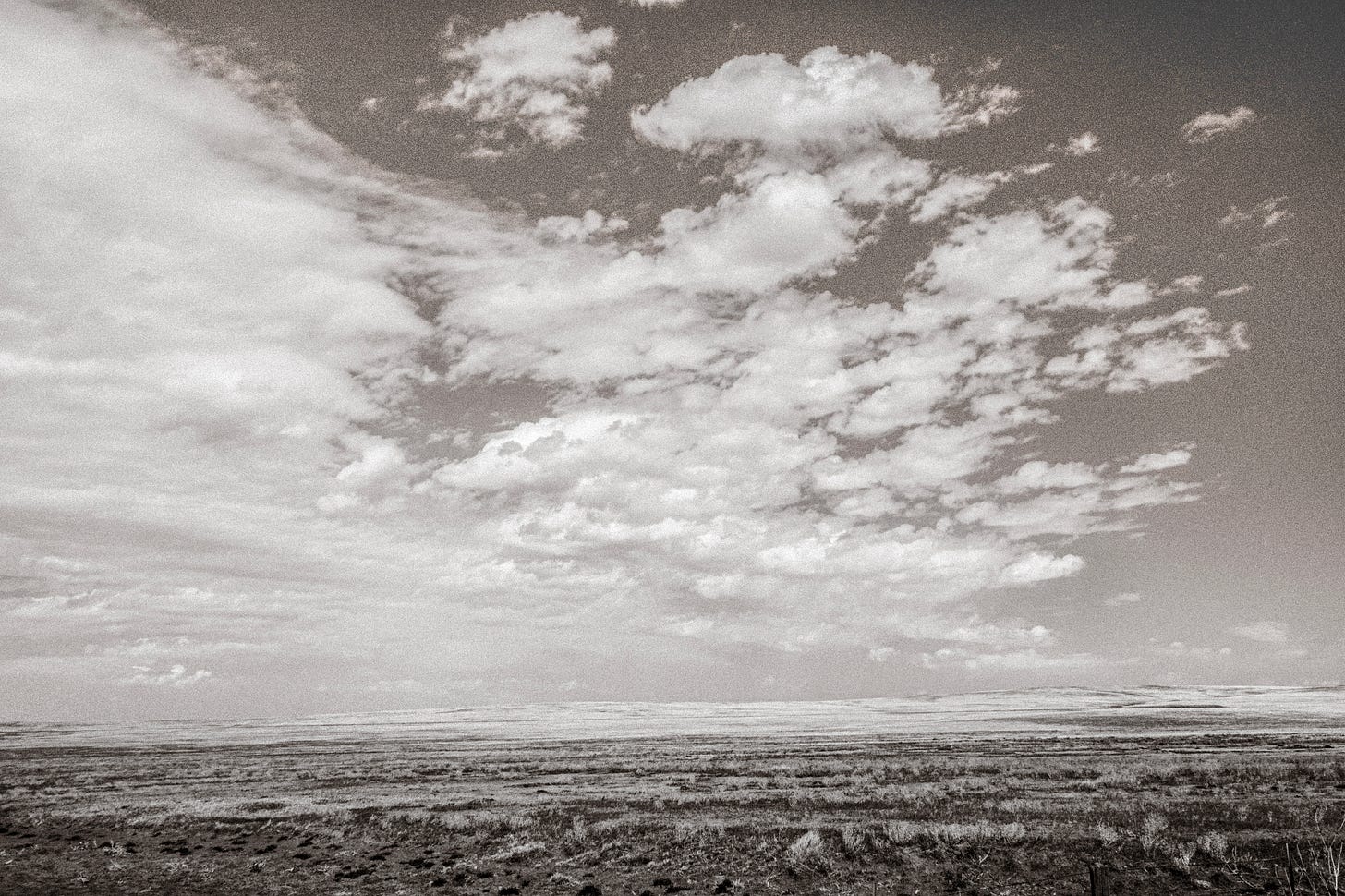
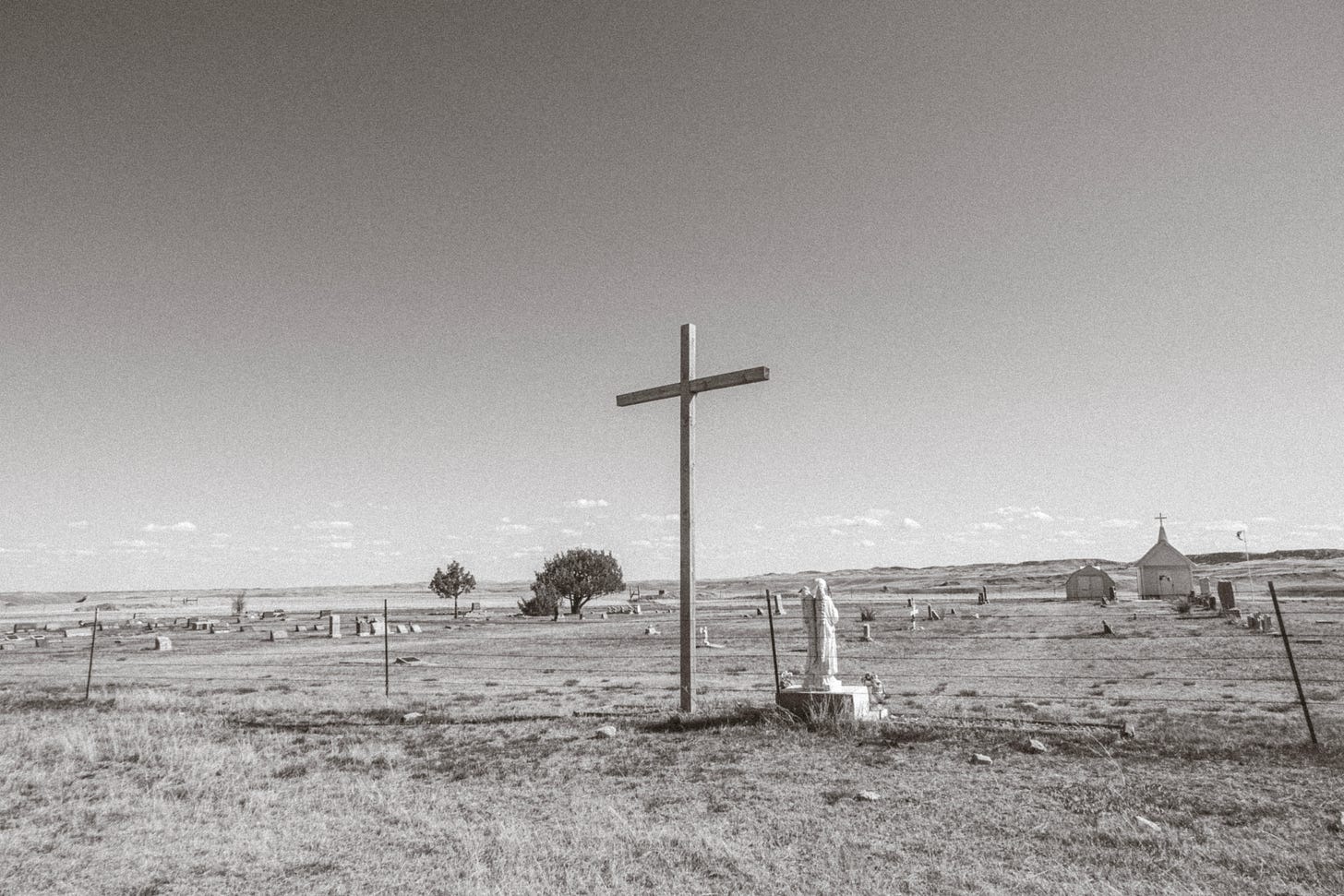
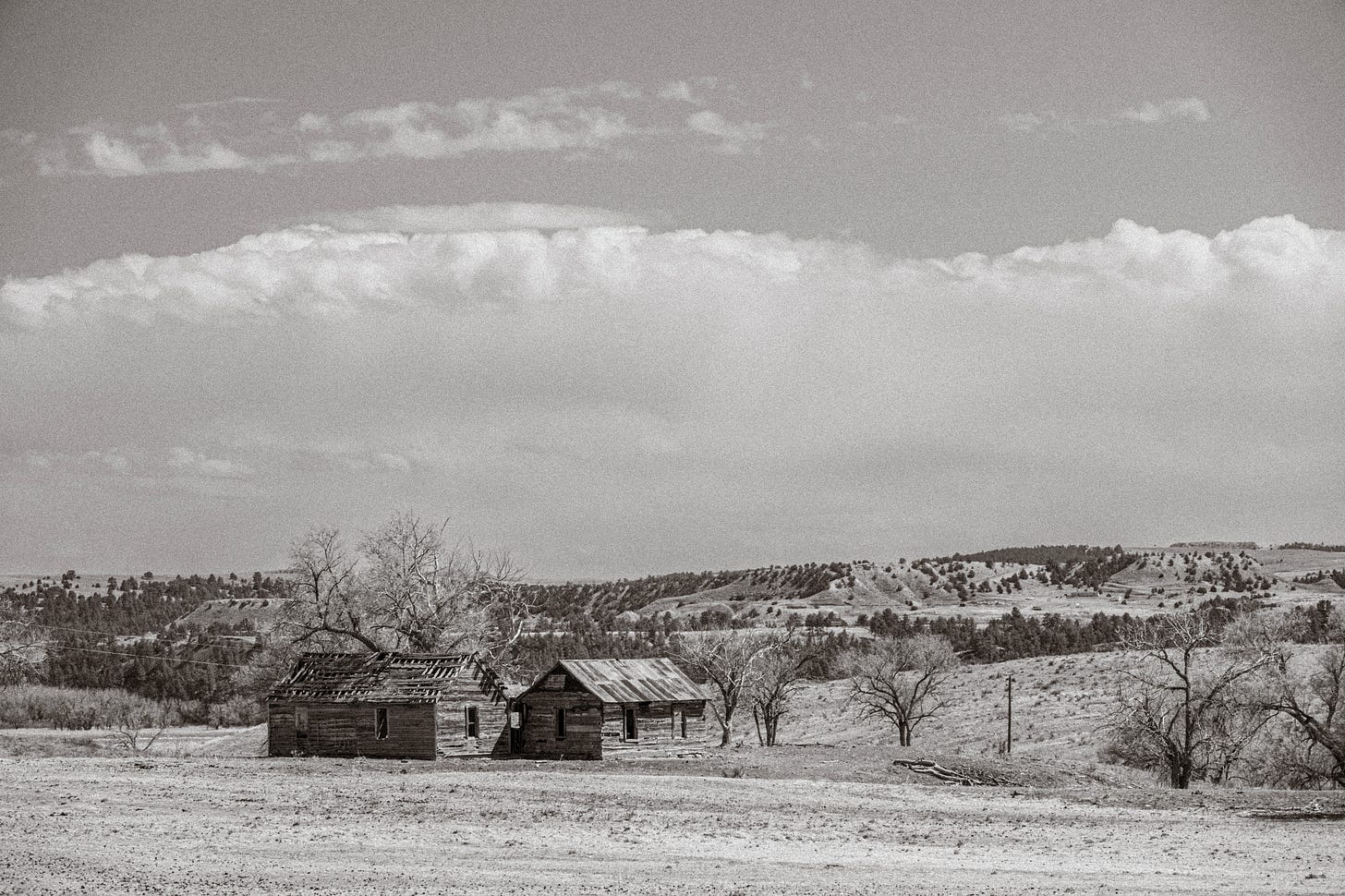
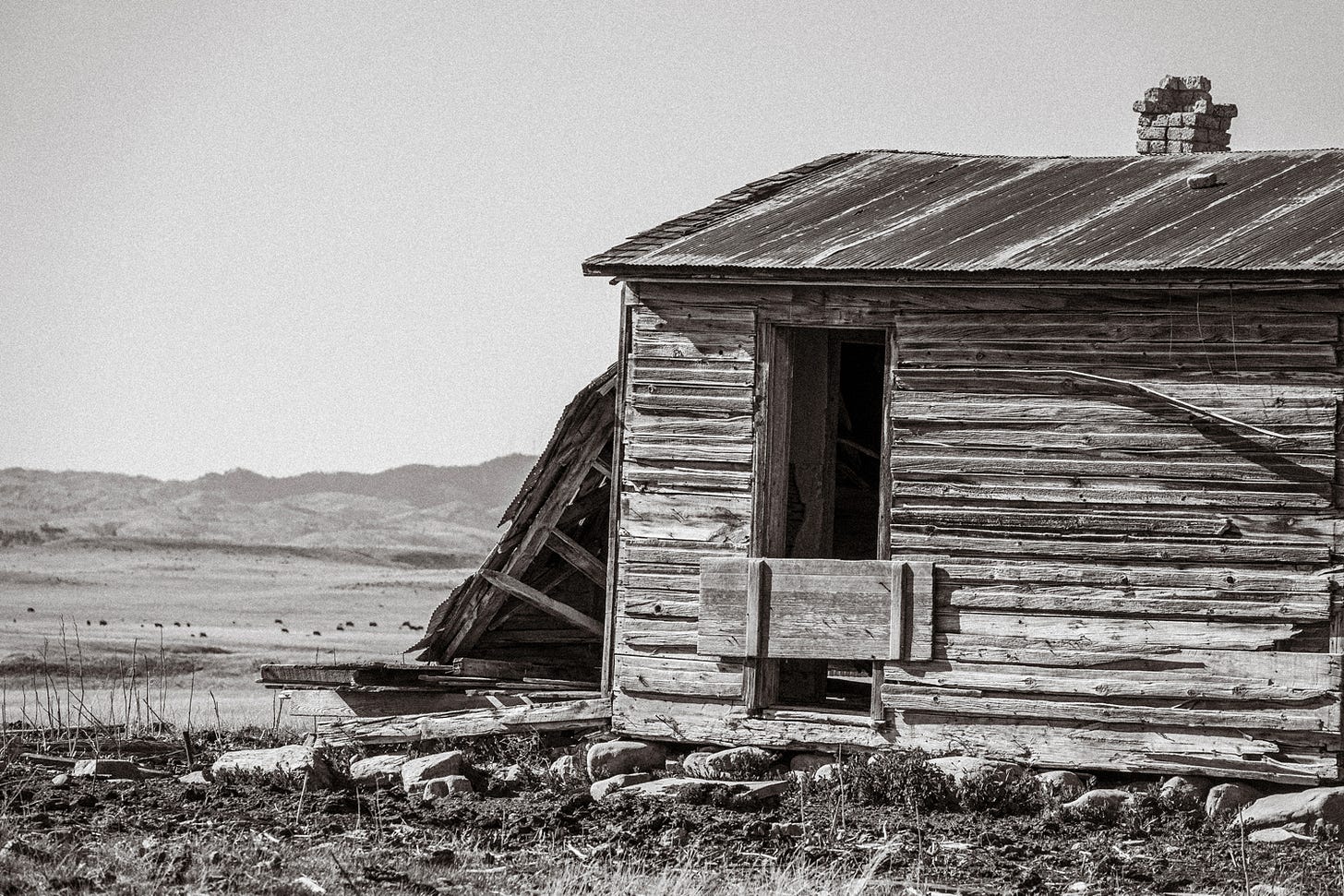
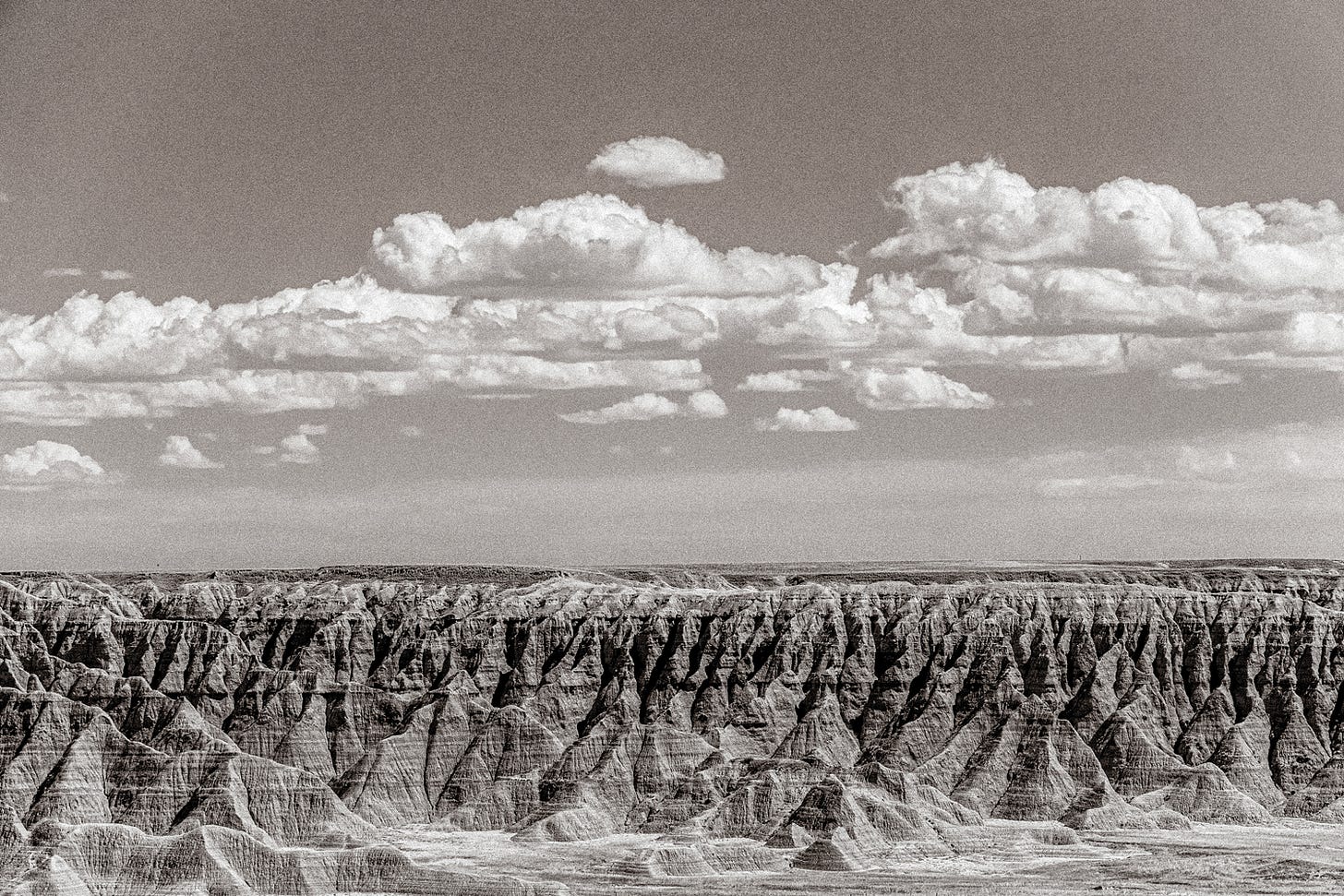
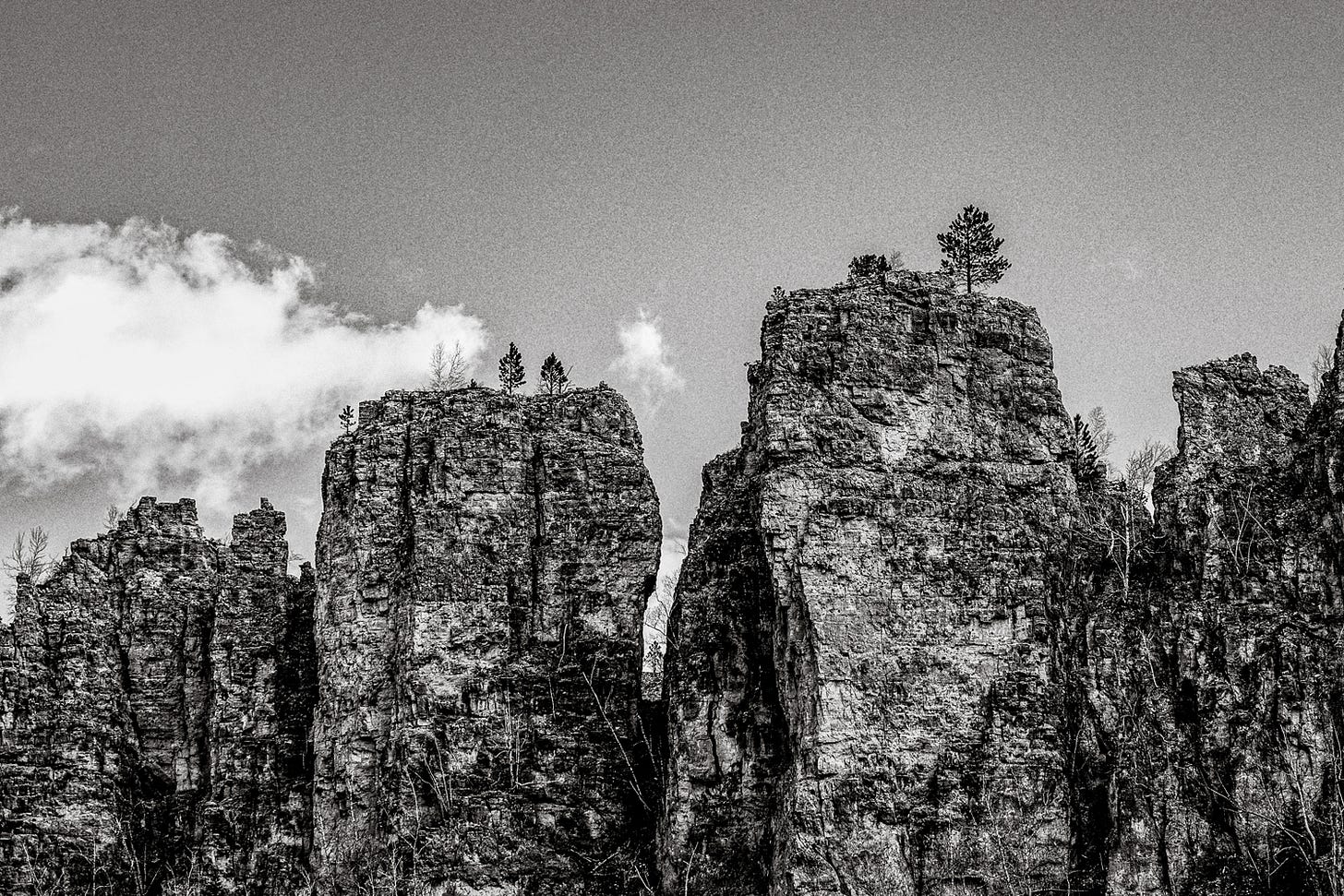
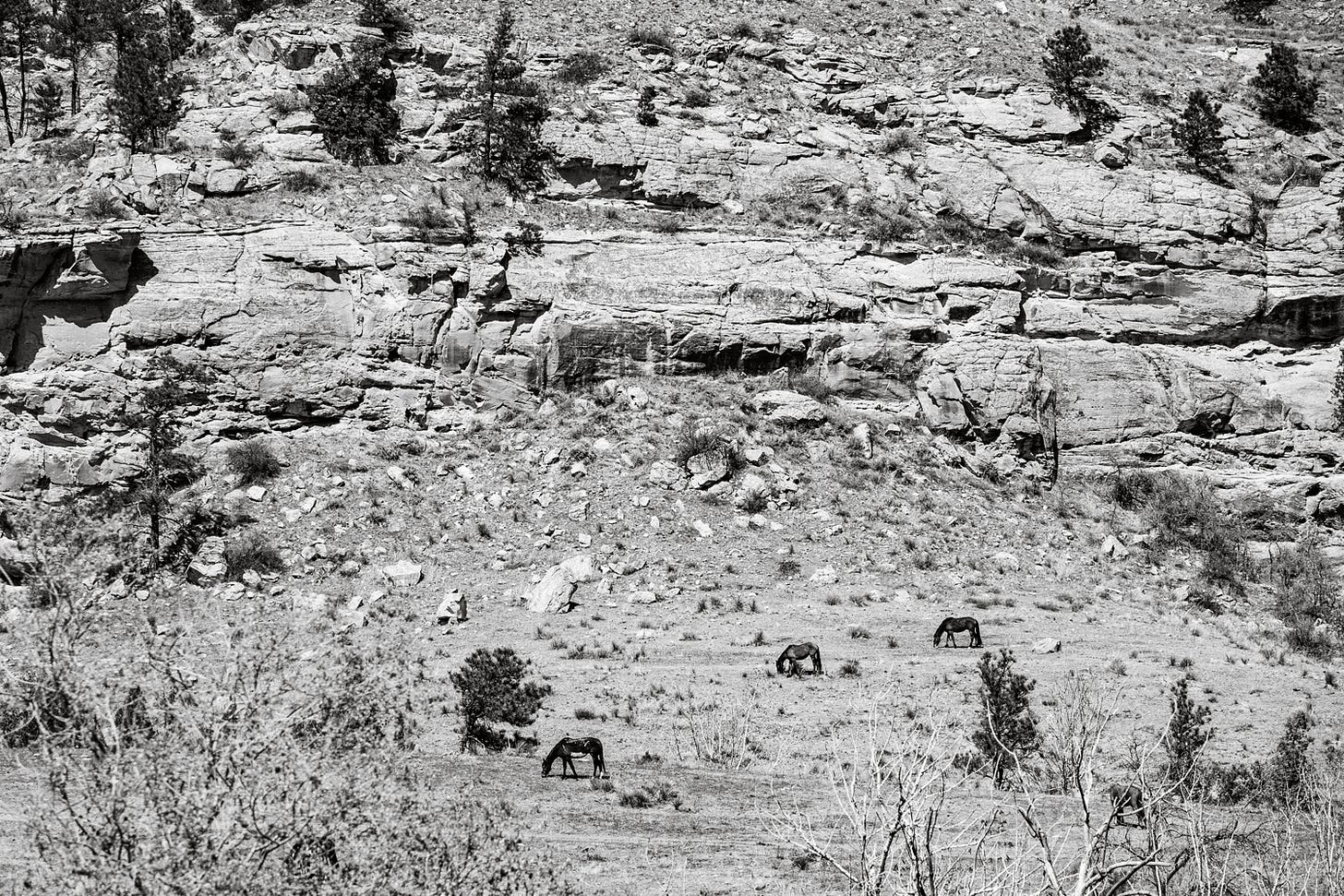
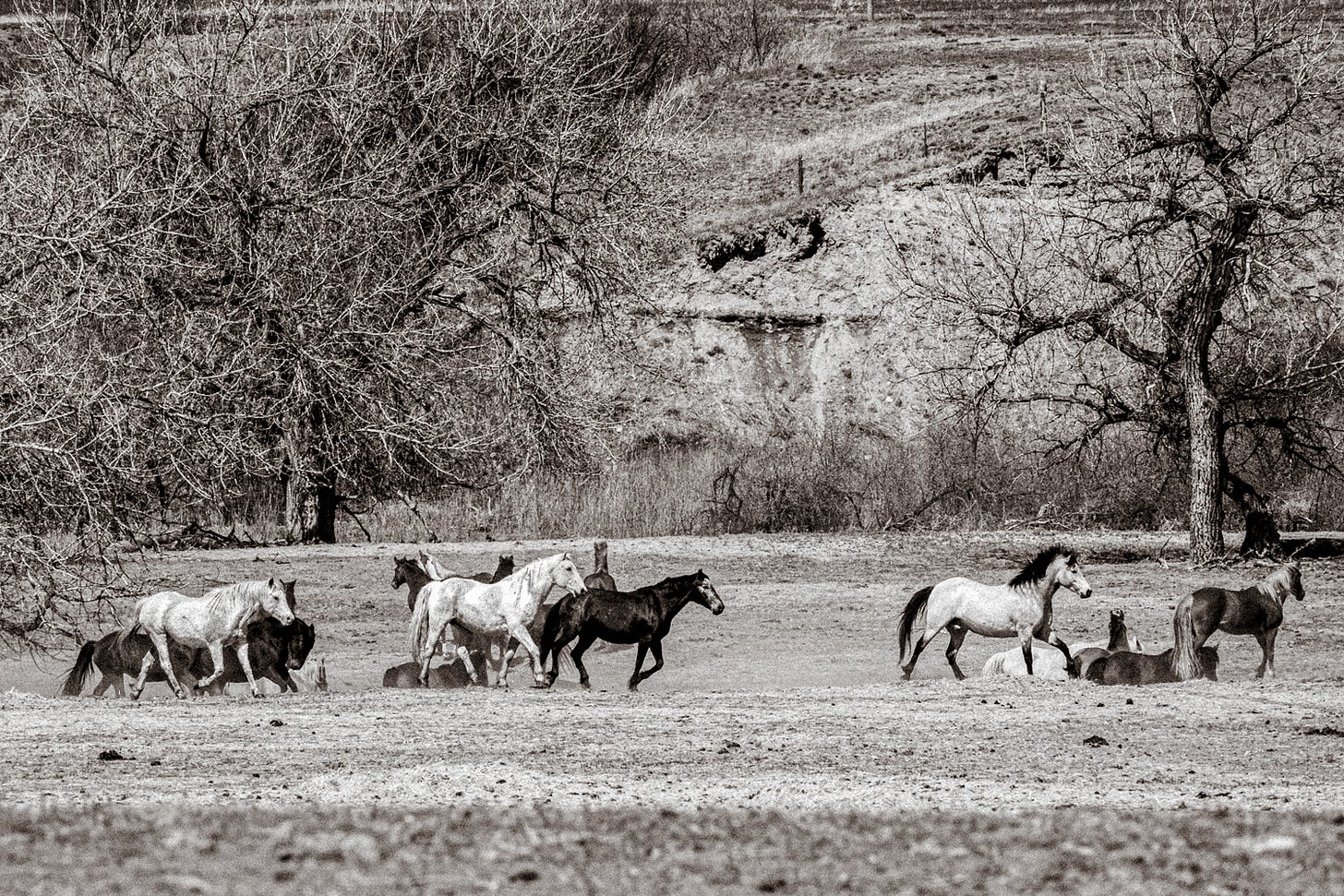

The Great Plains -especially the northern part- has a special place in my heart. The vastness is just mind-blowing. Thank you for sharing.
Fascinating geology. And love the weathered buildings. Nice shots. I’ve driven around quite a bit of the US but I’ve never been to the Dakotas and it’s on my list of places to visit someday. Thanks for the post.